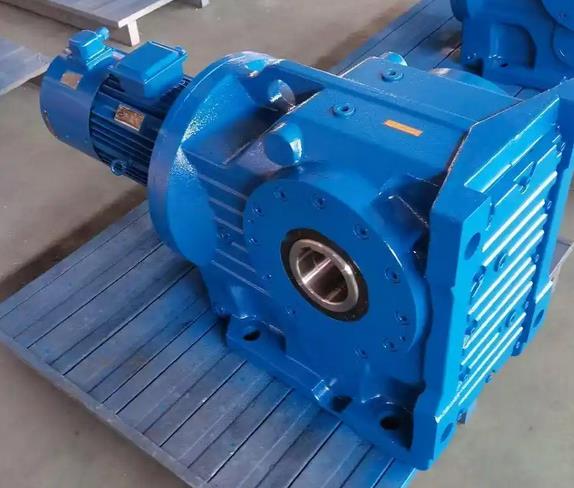Share some practical examples of handling abnormal heating of KA167R97-479-11KWKA167 gearbox
The following are some examples and solutions for abnormal heating of reducers. Although the KA167R97-479-11KW model is not explicitly mentioned, it can be used as a reference:
Example 1: Heating caused by excessive load
Fault phenomenon: On the production line of a certain factory, after running for a period of time, the temperature of a reducer has significantly increased, exceeding the normal operating temperature range. After inspection, it was found that the load borne by the gearbox exceeded its rated load.

Reason analysis: Due to the adjustment of production tasks, the workload of the equipment has increased, and the selection of the reducer has not been adjusted in a timely manner, resulting in its long-term operation under overload conditions. Excessive energy is converted into heat energy, causing abnormal heating.
Solution: Re evaluate production demand and replace the gearbox with a higher power to match the increased load. At the same time, optimize the production process to avoid prolonged overload operation of equipment.
Example 2: Lubrication issues leading to heating
Fault phenomenon: A gearbox experiences heating and abnormal noise during operation.
Cause analysis: After inspecting the gearbox, it was found that the amount of lubricating oil was insufficient and the quality of the lubricating oil was poor, resulting in increased friction between components such as gears and bearings, generating excessive heat.
Solution: Firstly, an appropriate amount of lubricating oil that meets the requirements has been added. Secondly, regular testing and replacement of lubricating oil should be carried out to ensure that the quality and quantity of lubricating oil meet the working requirements of the gearbox. At the same time, impurities and dirt inside the gearbox were cleaned to ensure the normal operation of the lubrication system.
Example 3: Poor heat dissipation leading to overheating
Fault phenomenon: In a workshop with a high temperature environment, the temperature of the gearbox continues to rise during operation, and even under normal load conditions, abnormal heating occurs.
Reason analysis: The ambient temperature in the workshop is high, and the air circulation around the reducer is not smooth, which makes it difficult to dissipate heat.
Solution: Install a fan near the reducer to enhance air circulation and improve heat dissipation. At the same time, the overall environment of the workshop has been improved by adding ventilation equipment and reducing the temperature inside the workshop.
Example 4: Bearing damage causing heating
Fault phenomenon: During the operation of the gearbox, the temperature of the bearing area rises abnormally, accompanied by vibration and noise.
Cause analysis: After inspection, it was found that the bearings were worn and damaged, resulting in poor operation, increased friction, and the generation of a large amount of heat.
Solution: The damaged bearings were promptly replaced, and a comprehensive inspection of other components of the gearbox was conducted to ensure that there were no other potential issues. At the same time, daily maintenance of the gearbox has been strengthened, and the condition of the bearings has been regularly checked to promptly identify and address any issues.
Example 5: Installation issues causing heating
Fault phenomenon: The newly installed gearbox experienced abnormal heating shortly after operation.
Cause analysis: After inspecting the installation process, it was found that the installation position of the reducer was incorrect, resulting in a deviation in the connection between its output shaft and the transmission device, which caused the reducer to bear additional force during operation, resulting in heating.
Solution: The installation position of the reducer has been readjusted to ensure accurate connection between its output shaft and the transmission device. At the same time, the connecting components were inspected and tightened to avoid looseness and displacement.

